In Venice Lagoon there are islands that are difficult to forget, one of these is Murano, the island of blown glass, which has seen entire generations of glassmakers engaged in this process. With half an hour by vaporetto from Venice you will have the opportunity to savor the life of an island that will reveal a world apart. You will retrace the history of Murano glass at Palazzo Giustinian, home of the glass museum, you will observe the glass manufacturing process in one of the many Glass Factories and you will be able to compete in this ancient art alongside one of the most famous master glassmakers, creating a Unique item to take home as a special souvenir.
The wonderful history of Murano glass began in 1291, when it was decided that the glassworks of Venice should be moved to Murano. This decision was made because laboratory ovens in Venice were the main cause of dangerous fires. Conveying all the glassworks to Murano was useful for Venice to control the activity of the master glassmakers, but soon the Serenissima was jealous of the fame that Murano was acquiring and forced the master glassmakers to live on the island, preventing them from leaving it without a special permit.

Murano glass: the manufacturing process
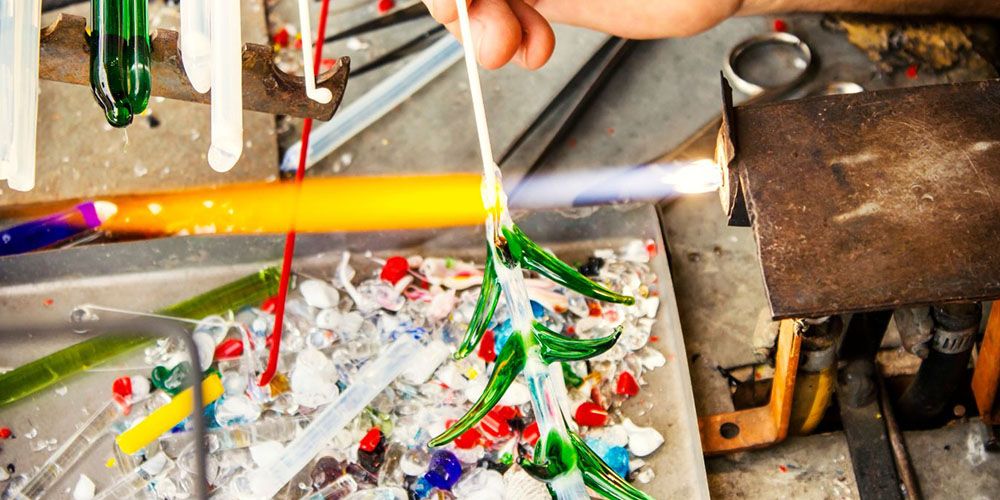
Murano glass is famous all over the world, produced by hand in the ancient Murano furnaces, it is synonymous of elegance and certified quality, because only companies that protect the tradition and characteristics of the works can use the brand. Colorful and original, Murano glass is a joy for the eyes.
But how to make Murano glass? Glass is made of silica, a compound that becomes liquid when brought to high temperatures. In the moment of transition between the liquid and solid states, the glass becomes soft and malleable, allowing the glassmaker to shape it to create surprising and unique works.
The most famous techniques are: blown glass, the molding technique and lamp work, which is a Muranese specialty.
Murano glass first stop: visit a glass factory
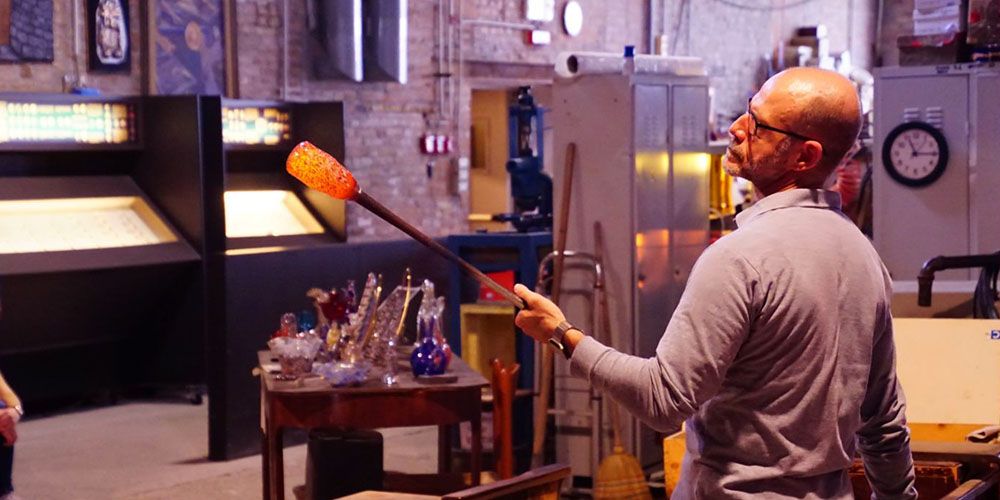
Visiting a glass factory will be a surprising experience, you will witness a magic that has been repeated for millennia, the glass will be blown and shaped while still warm in front of your eyes. There are so many glass factories in Murano, in the main street as soon as you disembark from the vaporetto you will find one after the other and many lend themselves to demonstrations. Look out and browse through the works on display!
We recommend a particular glass factory, it is the Glass Cathedral, one of the oldest structures on the island of Murano that occupies the spaces of the former church of Santa Chiara. It was once an ancient monastery, recently renovated and converted into a glass factory. The visit for both the spaces and the workmanship will prove fascinating. The splendid creations of the master glassmakers can be freely admired both on the ground floor and on the first floor.
It is in these ancient spaces that you will be able to attend a demonstration and see the glass, incandescent and malleable, transformed into beautiful objects. The master glassmaker will use the glassmaking stick, a sort of giant straw, to inflate the glass sphere placed at the end with the air blowing through the tube and then begin to work it with various tools of the trade, giving it the chosen shape. Some Murano glass processing techniques are practiced only on this island, making Murano unique worldwide.
Witness glass makingMurano glass second stop: visit the Glass Museum
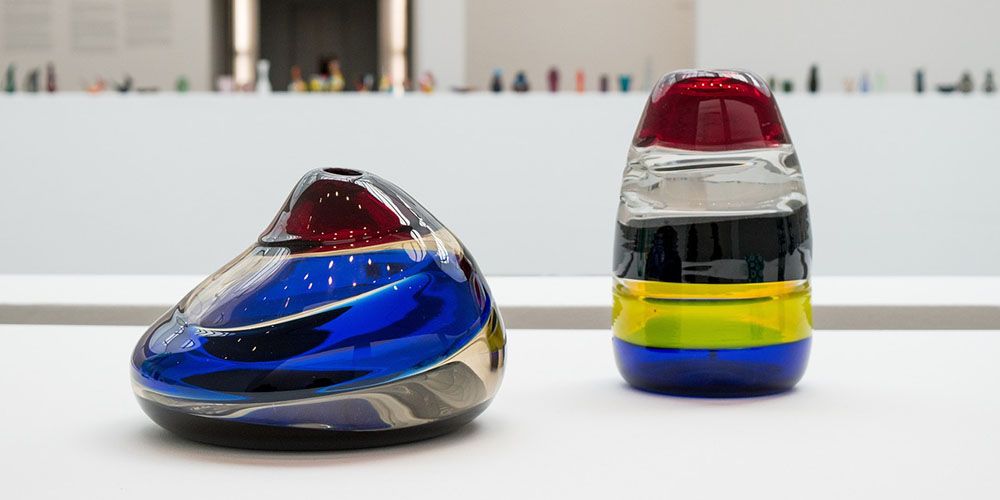
The Murano glass museum is located a few steps from the Museo Murano vaporetto stop. At Fondamenta Giustinian number 8, you will find Palazzo Giustinian, home of the Museum. The museum was founded in 1861, when the mayor of the island, a lover of glass art, decided to create an archive that collected all the documentation relating to the history of the island. Many owners of furnaces donated glass from both previous and contemporary centuries and the archive became a Museum. At the time, the mayor created a school attached to the museum that the glassmakers attended on holidays, where they had the opportunity to study the models of the past that were preserved there. Over the years the collections of the Murano glass museum have been considerably enriched and today you can appreciate finds ranging from the Roman era to contemporary pieces of glass and design, retracing seven hundred years of history of Murano glass, among others there are also world-renowned masterpieces.
The route follows a chronological line and in addition to the artefacts you will be able to delve into the processing techniques and peculiar aspects of the art of Murano glass, which is handed down from generation to generation, guarding secrets, and talents. Also attached to the museum is the Spazio Conterie, a fascinating open space which hosts exhibitions and temporary events on the ground floor. In progress in this period are the exhibition Murano: upcycling glass and One Hundred Years of NasonMoretti, both until January 2024. Both worthy of note, the first dedicated to the importance of the ecological approach and how glass waste can be transformed into splendid works of art; the second illustrates the history of a Murano glass family, one of the most prosperous and original realities.
Visit the glass museumLearn glass art
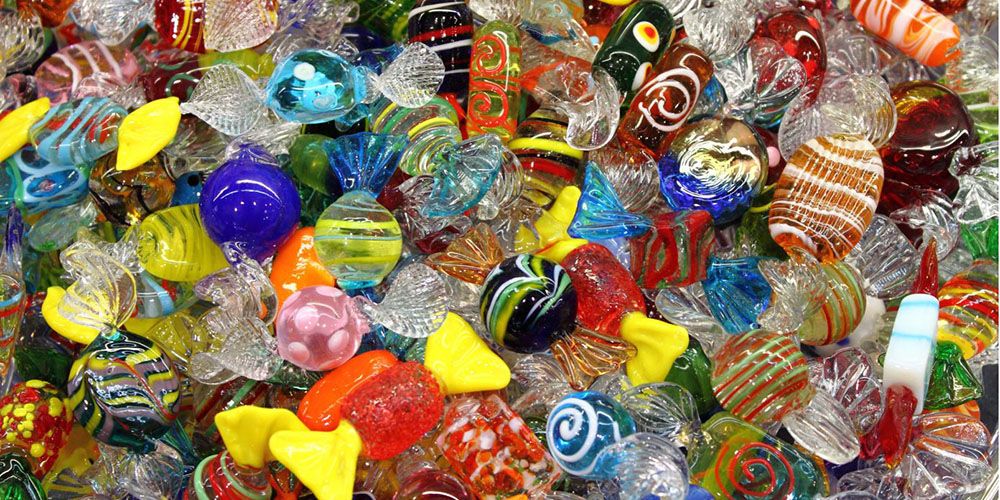
To conclude your experience, we recommend you to jump right in and try your hand at the age-old art of glass. It can be done around here. There are various master glassmakers who make their talent available to teach beginners and enthusiasts some processing techniques.
You will have the opportunity to feel like an heir to a centuries-old art, creating a glass object yourself, shaping it to your taste with an expert guide who accompanies you. You will have had an authentic and creative experience. During the workshop you will also be able to discover the characteristics that differentiate Murano glass from other types of glass. Working with molten glass is very evocative and will allow you to feel like a master glassmaker, returning home with your personal creation in your hands.
Discover moreAbout the author
Written on 04/10/2023



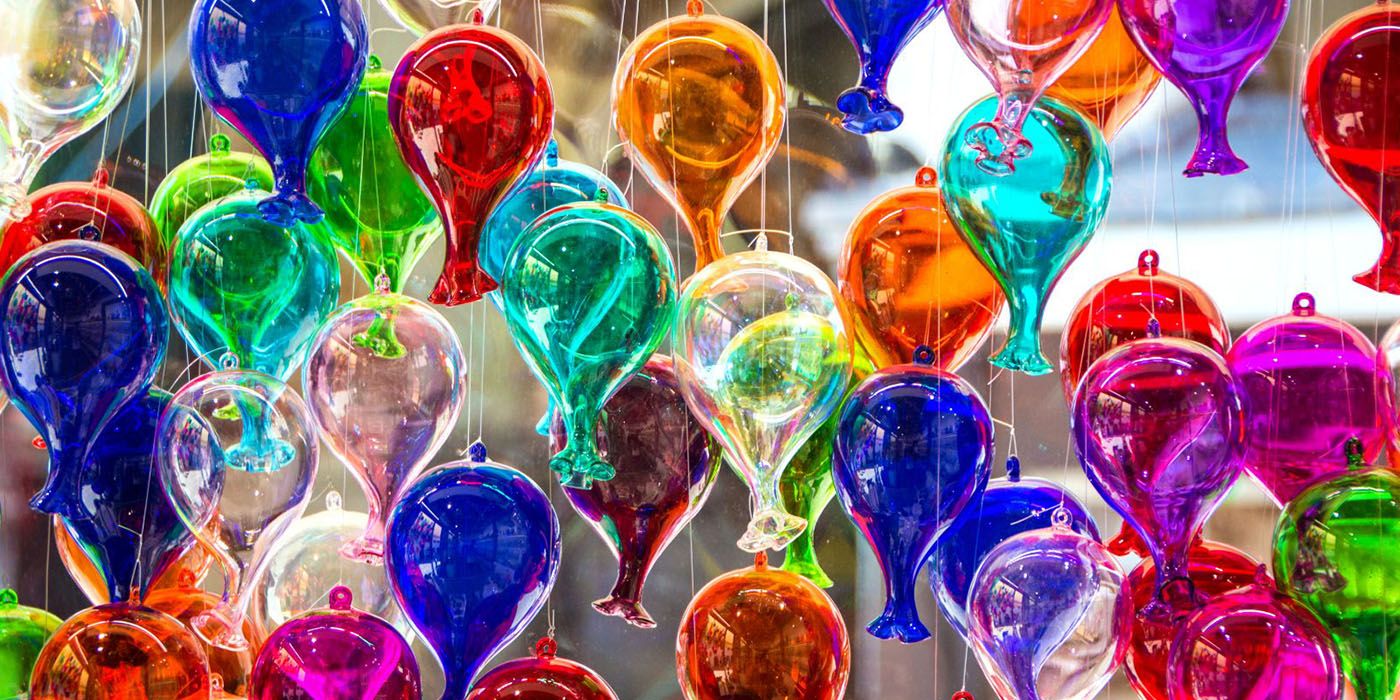
Chiarastella Campanelli
How to make Murano glass? Come with us to discover and learn the art of glass manufacture